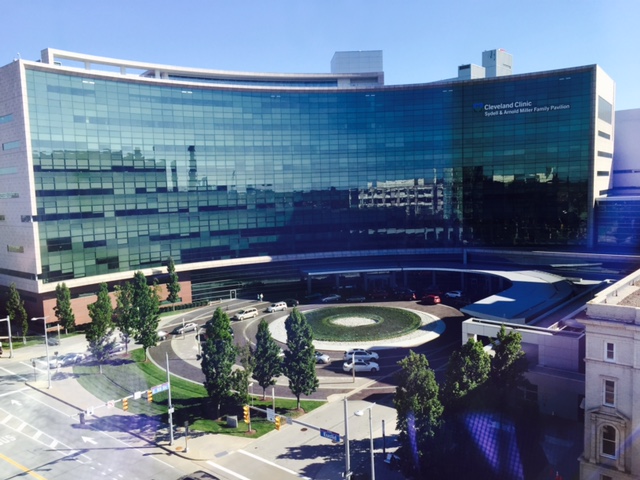
A former researcher at the Cleveland Clinic who studied cardiac genetics has lost three papers for what an institutional investigation concluded was “more likely than not” a case image falsification.
As we reported last year, the work of Subha Sen, once a highly funded scientist at Cleveland Clinic but who left the institution in 2011, has come under scrutiny on PubPeer (note: a researcher with the same name, but at a different institution, also appears in these search results). With the latest papers, Sen now has nine seven retractions for issues including questions about the integrity of the data and the validity of the images.
The three newest removals involve studies published in the American Journal of Physiology-Heart and Circulatory Physiology between 2004 and 2009. The notices are very similar while referring to different images.
Here’s the statement for the 2005 article, “Inhibition of NF-κB induces regression of cardiac hypertrophy, independent of blood pressure control, in spontaneously hypertensive rats”:
This article has been retracted and there are 3 comments on PubPeer (by: Cavendishia Grandifolia). The American Physiological Society is retracting this article because of concerns of inappropriate image manipulation in Figs. 4 and 8. An investigation of research misconduct was conducted by the Cleveland Clinic. Cleveland Clinic’s Board of Governors/Medical Executive Committee concurred with the investigation’s finding that it is more likely than not that one or more of the images in this publication have been falsified. The authors disagree with the findings of the Cleveland Clinic’s Board of Governors/Medical Executive Committee and the decision of the journal to retract the article. The authors stand by the results and conclusions of this article and state that no data in their article were compromised by any means.
The paper has been cited 66 times, according to Clarivate Analytics’ Web of Science. The other two papers are Silencing the myotrophin gene by RNA interference leads to the regression of cardiac hypertrophy — cited 14 times — and Influence of cytokines and growth factors in ANG II-mediated collagen upregulation by fibroblasts in rats: role of myocytes, cited 66 times.
Chris England, the associate publisher for ethics and editorial development at the American Physiological Society, which publishes the journal, said the group has a “transparent and rigorous publication ethics policy,” but declined to say when the journal first learned about the problematic papers or whether it investigated them on its own:
APS does not address inquiries or discuss perceived or actual ethical infractions with individuals, groups, or organizations not directly involved with the matter, including the media.
Angela Smith, a spokesperson for Cleveland Clinic, told us that Sen retired in 2011 but would not provide any details about the case:
We investigate all allegations of research misconduct in accordance with our policies and federal regulations. We do not publicly disclose the results of our investigations.
Like Retraction Watch? You can make a tax-deductible contribution to support our work, follow us on Twitter, like us on Facebook, add us to your RSS reader, or subscribe to our daily digest. If you find a retraction that’s not in our database, you can let us know here. For comments or feedback, email us at [email protected].
https://my.clevelandclinic.org/departments/cancer/depts/taussig
Taussig center is part of the Cleveland clinic.
“At Cleveland Clinic’s Taussig Cancer Institute, part of the Cleveland Clinic Cancer Center…”
Paper co-authored by prominent scientist George Stark.
J Interferon Cytokine Res. 2002 May;22(5):603-13. doi: 10.1089/10799900252982089.
Resistance to interferons in melanoma cells does not correlate with the expression or activation of signal transducer and activator of transcription 1 (Stat1)
Mamta Chawla-Sarkar 1, Douglas W Leaman, Barbara S Jacobs, Ralph J Tuthill, Moitreyee Chatterjee-Kishore, George R Stark, Ernest C Borden
Affiliation
1Center for Drug Discovery and Development, Taussig Cancer Center, Cleveland, OH 44195, USA.
PMID: 12060499
DOI: 10.1089/10799900252982089
https://pubpeer.com/publications/2351CE8706763A052AF8315BDCE154
Figure 2 and 5. Areas much more similar than expected.
https://imgur.com/ApSI1GG
Related to this. First author is not a failed scientist.
https://journosdiary.com/2019/07/31/icmr-niced-mamta-chawla-sarkarduplicated-manipulated-images/
J Biol Chem. 2011 Sep 23;286(38):33037-44. doi: 10.1074/jbc.M111.257022. Epub 2011 Aug 4.
Caspase-8-mediated cleavage inhibits IRF-3 protein by facilitating its proteasome-mediated degradation
Nathaniel Sears 1, Ganes C Sen, George R Stark, Saurabh Chattopadhyay
Affiliation
1Department of Molecular Genetics, Lerner Research Institute, Cleveland Clinic, Cleveland, Ohio 44195, USA.
PMID: 21816816
Areas much more similar than expected in several figures.
https://pubpeer.com/publications/AD1A66F49E59DCD01AC5CF3041F9A6
Example in figure 1B.
https://imgur.com/iT5IeKb
First author is not a failed scientist:
https://medicine.tamu.edu/faculty/gupta.html
Another first author who did not fail:
https://www.linkedin.com/in/sagartirtha-sarkar-4032b68b/?originalSubdomain=in
March 2024 retraction for Subha Sen.
https://pubpeer.com/publications/C675D0E7763816346DDE3B716D9DA3#1